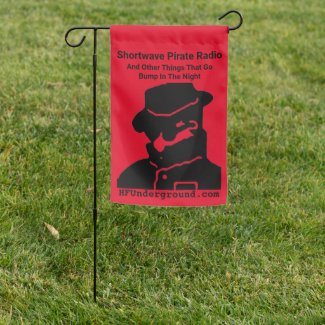If the Nicaraguan Coast Guard is talking to them then that makes the frequencies somewhat "official" right? Even if they're outside the ITU authorized maritime bands, they are operating in what's called "fixed/mobile" (doesn't that apply to, well, every single type of radio transmission?) bands, of which 6765-7000 kHz is one.
43 meters isn't their only playground, that's for sure. I've heard them above 75 meters (40xx kHz area) and, of course, the whole 25-30 MHz region is up for grabs when the band conditions are right. Out of the box, most HF-SSB marine radios do 1.6-30 MHz (or 1.6-27.5 MHz appears to be another common one), so pick a frequency for you and your pescadore buddies and go!
I imagine its a combination of land-based and marine transmissions that we've been hearing on these frequencies, the big one being 6925 kHz LSB. I think 6900 kHz - USB and LSB, is, at least when I've listened to it, Mexican in origin (going by the accented Spanish language heard). Doesn't stop Brazilian fishermen from using that frequency though!
I'm sure that drug traffickers are using HF radios as well, but I doubt they're what we've been hearing. A smart drug smuggler wouldn't use the same frequency over and over again and be so chatty (danger of being DFed, etc). I have seen documentaries about narco-submarines and they were shown to be equipped with Icom IC-M710 HF-SSB radios for communication with whichever fishing boat they meet to make the mid-ocean transfers of their cargo. I imagine its a predetermined time and frequency and the communications are short and to the point, probably using terminology that would sound like usual fishery communications if some DXer (or some law enforcement agency) were to stumble upon their QSO.
The documentary in question also discussed upon the use of driftnet radio buoys attached to containers trailed behind normal fishing boats. If law enforcement shows up, the container is released, the buoy floats to the surface, turns its transmitter on, and is later retrieved. Since this is the same technology used for regular fishing activities, nothing seems out of the ordinary. The buoys operate in the 1600-4000 and 26000-28000 kHz ranges, before you ask

I'm sure they're using other frequencies besides 75, 43 and 11 meters.




